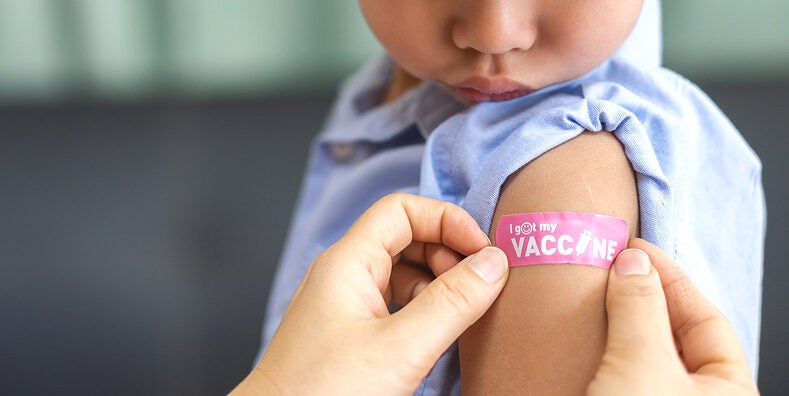Between 1982 and 1986, a vaccine liability crisis loomed as the greatest threat to immunizing our children. In this light, the National Childhood Vaccine Injury Act of 1986 (P.L. 99-660) was enacted to address this problem by creating a system for “no-fault” compensation for families of children with adverse conditions related to routine pediatric immunizations. Amendments in 1987 and 1989 further refined the process. This policy resolved a key threat to childhood immunizations, yet concerns about the affordability and accessibility of vaccines remained.
By the late 1980s, the combination of federal budget austerity, lack of health coverage for low-income children, and the vaccine liability crisis had taken its toll. Immunization rates were falling. A Children’s Defense Fund (CDF) report I authored in 1987 (based on analysis of data from the Centers for Disease Control and Prevention, National Immunization Survey which had not been made public) found that while some families were abstaining from immunizing their children, 9 out of 10 infants had at least one dose of a recommended vaccine. Moreover, many who got one dose did not complete the recommended series of vaccines in a timely manner or at all1. CDC data showed that immunization coverage levels for preschool-age children had worsened or showed no improvement in the first half of the decade. The CDF report argued that the erosion of funding for key federal programs was a critical factor driving low immunization coverage rates.
Such failures were reviewed in March 1988 at a special hearing of the Senate Committee on Appropriations, Subcommittee on Labor, Health and Human Services, and Education chaired by Senator Bumpers. Witnesses stated that President Reagan’s budget request included funding sufficient only to provide the same number of doses of vaccine as were purchased in the previous year, and as a result of the shortfalls in the proposed federal funding level, 32 states would not receive sufficient public health grant funds to cover the increased cost of vaccines.
At the same time, a major resurgence of measles occurred with more than 55,000 cases reported between 1989 and 1991, an average of more than 18,000 cases a year compared with approximately 3,000 cases annually earlier in the 1980s. News articles at the time quoted officials at CDC saying that the failure to make vaccines accessible and affordable allowed measles to make a comeback. The response to the measles epidemic was shaped by the National Vaccine Advisory Committee (NVAC), which was chartered in 1988 to advise the US Department of Health and Human Services (HHS). By 1990, the Bush Administration had appointed NVAC members who included consumer advocates, industry representatives, and scientific experts, and who prepared a Measles White Paper, which made set out a blueprint and made key recommendations for responding to the measles epidemic.
After several years, a call to action by President Clinton and introduction of the Comprehensive Child Immunization Act of 1993 in Congress, the Vaccines for Children (VFC) program was signed into law as part of the Omnibus Budget Reconciliation Act of 1993 (OBRA 93). Authorized by the Social Security Act Section 1928, the VFC program is an entitlement program for eligible children, including those who are covered by Medicaid, are uninsured, and/or have American Indian/Alaska Native ethnicities. In addition, children who have health insurance that does not cover vaccination are eligible for the VFC program if they are served through a federally qualified health-care center (FQHC) or rural health clinic (RHC).
The VFC program was created to supply children’s health care providers with federally purchased vaccines at no cost for administration to eligible children and adolescents in accordance with the Recommended Childhood and Adolescent Immunization Schedule. This allows the VFC program to provide vaccines at no cost to children whose families may not be able to afford them, which helps assure that all children have access to recommended vaccinations and are best protected against vaccine-preventable diseases. In effect, the VFC program automatically covers vaccines appropriate for children ages 18 years and younger that have been approved by the Food and Drug Administration and recommended by the Advisory Committee on Immunization Practices (ACIP).
The brilliance of VFC was its visionary response to three key barriers: coverage, supply, and access. The program is unique among US preventive health policies, a multifaceted health policy response aimed at creating a durable solution to a complex, related set of problems. The roots of VFC trace to a growing awareness of the health disparities attributable to public health and health care system failures that especially confronted the nation’s poorest children. In place of the old way of subsidizing childhood vaccines through CDC grants, Congress chose a path that would guarantee financing and coverage of the full ACIP recommended schedule for the nearly half of all children who are low-income.
The VFC program has been a major success and is credited with substantially increasing immunization rates among U.S. children, thereby preventing harm from infectious diseases, as well as narrowing disparities in access. Nearly 90% of children eligible for VFC who were born in 2020 received the measles, mumps, and rubella (MMR) vaccine, with no differences by poverty status, race and ethnicity, or living in urban versus rural areas. Looking back over three decades of the VFC program, analysts found that among 117 million children born during the years 1994-2023, routine childhood vaccinations prevented about 508 million illnesses, 32 million hospitalizations, and over 1.1 million deaths, at a net savings of $540 billion in direct costs and $2.7 trillion in societal costs.
- Johnson K. Who’s Watching Our Children’s Health. Washington, DC: Children’s Defense Fund. 1987. ↩︎
[This is part of a Georgetown University Center for Children and Families blog series on vaccine policy.]


